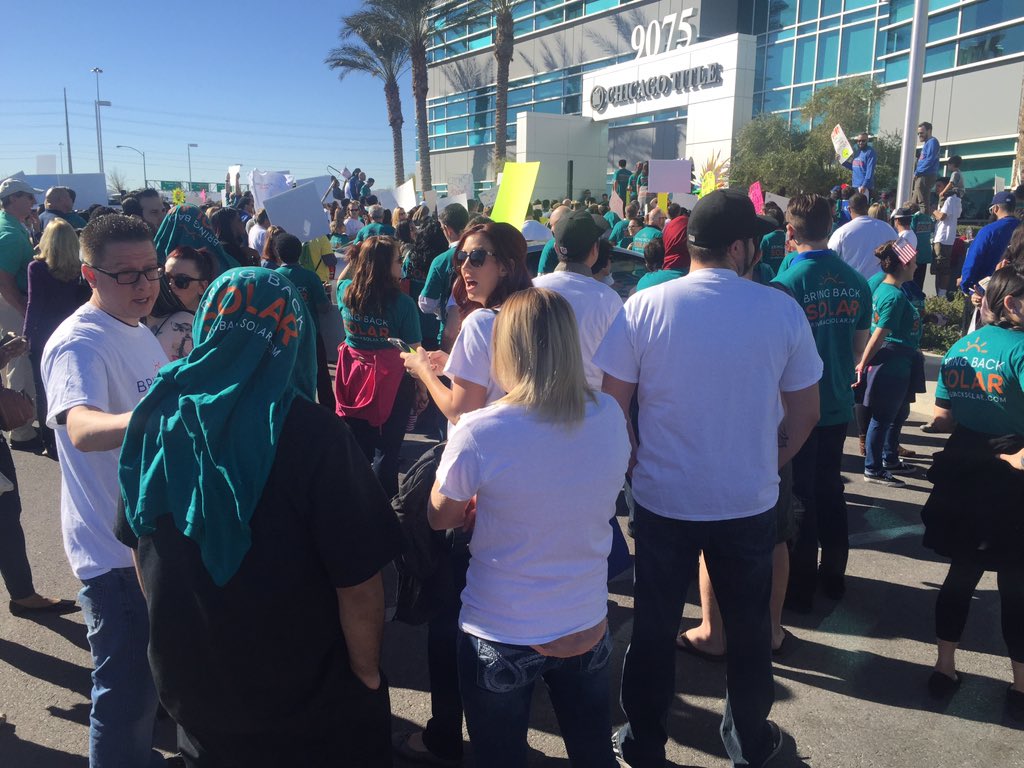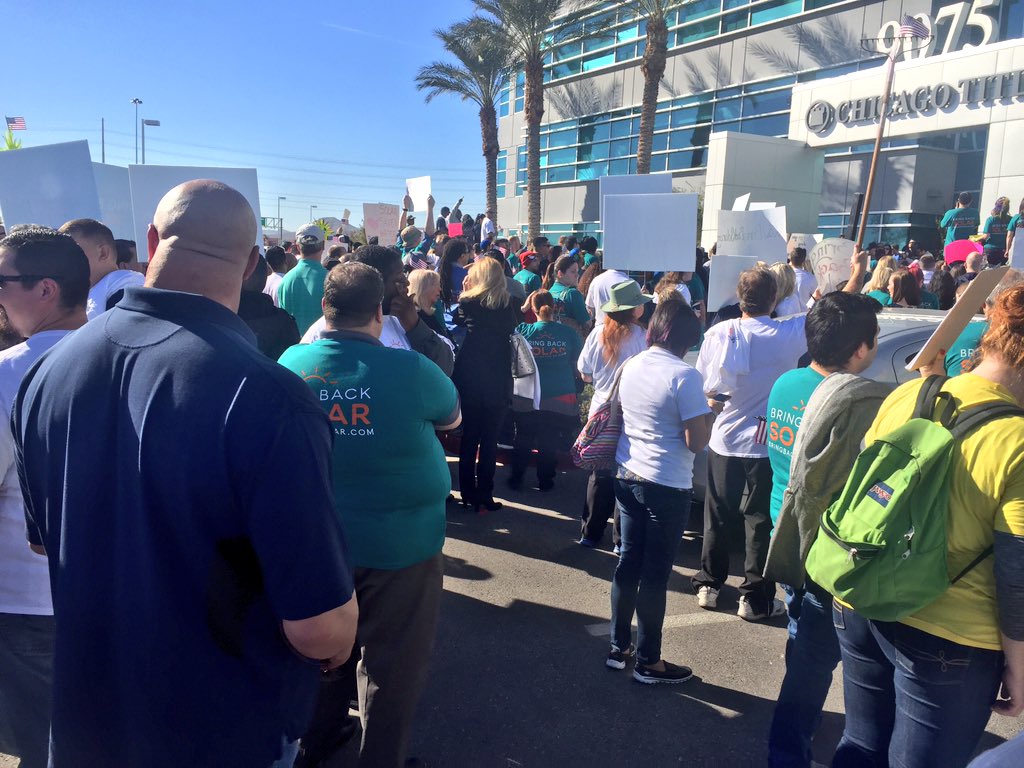electracity
Active Member
From reddit:
Recently having gotten tons of lease/ppa quotes myself. SolarCity was FAR and away the most expensive.
NRG, SunRun, Vivint, Sungevity, Trinity all were able to provide me with a deal way better than SolarCity was able to provide. SolarCity offered me $0.131/kWh with the 2.9% escalator. The rest all offered me in the range of $0.13 - $0.14/kWh with no escalator.
So if they're not trying to sell to morons, people are GOING to shop around. And they'll rather quickly realize that SolarCity is a bunch of ******** with their pricing. The escalator model doesn't work, it takes 5 minutes of research on Google to figure out that the "utility rate increase" they compare themselves too is highly unlikely to come true. SolarCity was "conservatively" comparing themselves to a 5% utility increase year over year.
Which basic math tells you it's not worth the risk. If my utility right now is about $0.15/kWh and SolarCity is $0.131 sure year one you're saving $0.02/kWh which honestly isn't even that much. I used about 14000 kWh in the last year. It's a different of about $266 in the first year.
Now... SolarCity is 100% guaranteed to increase year over year by 2.9%. Your local utility isn't guaranteed at all. It's an incredibly reasonable assumption that in 5 years you'll be paying SolarCity more money than you pay your local utility.
In no way does their escalator model make sense.
Now, on the other hand, I also got a quote from SunPower which was for a $0.109/kWh rate locked in with 0% escalator for 20 years. Now that's a lease that actually mathematically makes sense to a degree. You're saving about $575 in year one and odds are it'll either remain the same savings or increase as your utility increases.
And within a weeks worth of research I quickly figured out that many local companies will offer you $0/down loans with pretty solid rates to buy your system outright. Giving you the 30% federal credit and all of the SRECs and NetMetering benefits that come with the system. The system I'm working on getting conservatively projects (my numbers, not a salesman) to have a 100% payoff within the first 6 years. After that, it's pretty much all gravy with the way New Jersey's credits work out.
SolarCity is doomed if it doesn't change it's business practices quickly. Solar no longer costs $50-60,000 to get on your roof. They either need to start offering drastically cheaper leases or start being more honest and offering better ownership options. They quoted me $55,000 for an install with a 6.99% loan for 20 years. The company I'm going with is $32,500 with a 2.99% loan. That's not even close, it's literally almost half price for the exact same system. I understand being a larger company you have more overhead then a local company. But that's a BIG ****ING difference. Especially considering that SolarCity manufacturers their own panels and mounting systems which should give them an even bigger difference in their overhead and allow for cheaper installations. But they don't, because they're greedy.
They're in the same place that CircuitCity and Best Buy were in 5 years ago. CircuitCity was forced out of business due to companies like Amazon and TigerDirect offering better pricing online with free shipping. Best Buy almost went out of business but they adapted, they started offering Amazon price matching, allowing you to just go to the store and get your item this minute for the same cheaper price of Amazon. And now their stock is better than it's been in a decade. SolarCity needs to make a similar shift in marketing or they'll slowly die and fade away just like CircuitCity did years ago.
Why are we on /r/solar not talking about the SolarCity stock plummeting? : solar
Recently having gotten tons of lease/ppa quotes myself. SolarCity was FAR and away the most expensive.
NRG, SunRun, Vivint, Sungevity, Trinity all were able to provide me with a deal way better than SolarCity was able to provide. SolarCity offered me $0.131/kWh with the 2.9% escalator. The rest all offered me in the range of $0.13 - $0.14/kWh with no escalator.
So if they're not trying to sell to morons, people are GOING to shop around. And they'll rather quickly realize that SolarCity is a bunch of ******** with their pricing. The escalator model doesn't work, it takes 5 minutes of research on Google to figure out that the "utility rate increase" they compare themselves too is highly unlikely to come true. SolarCity was "conservatively" comparing themselves to a 5% utility increase year over year.
Which basic math tells you it's not worth the risk. If my utility right now is about $0.15/kWh and SolarCity is $0.131 sure year one you're saving $0.02/kWh which honestly isn't even that much. I used about 14000 kWh in the last year. It's a different of about $266 in the first year.
Now... SolarCity is 100% guaranteed to increase year over year by 2.9%. Your local utility isn't guaranteed at all. It's an incredibly reasonable assumption that in 5 years you'll be paying SolarCity more money than you pay your local utility.
In no way does their escalator model make sense.
Now, on the other hand, I also got a quote from SunPower which was for a $0.109/kWh rate locked in with 0% escalator for 20 years. Now that's a lease that actually mathematically makes sense to a degree. You're saving about $575 in year one and odds are it'll either remain the same savings or increase as your utility increases.
And within a weeks worth of research I quickly figured out that many local companies will offer you $0/down loans with pretty solid rates to buy your system outright. Giving you the 30% federal credit and all of the SRECs and NetMetering benefits that come with the system. The system I'm working on getting conservatively projects (my numbers, not a salesman) to have a 100% payoff within the first 6 years. After that, it's pretty much all gravy with the way New Jersey's credits work out.
SolarCity is doomed if it doesn't change it's business practices quickly. Solar no longer costs $50-60,000 to get on your roof. They either need to start offering drastically cheaper leases or start being more honest and offering better ownership options. They quoted me $55,000 for an install with a 6.99% loan for 20 years. The company I'm going with is $32,500 with a 2.99% loan. That's not even close, it's literally almost half price for the exact same system. I understand being a larger company you have more overhead then a local company. But that's a BIG ****ING difference. Especially considering that SolarCity manufacturers their own panels and mounting systems which should give them an even bigger difference in their overhead and allow for cheaper installations. But they don't, because they're greedy.
They're in the same place that CircuitCity and Best Buy were in 5 years ago. CircuitCity was forced out of business due to companies like Amazon and TigerDirect offering better pricing online with free shipping. Best Buy almost went out of business but they adapted, they started offering Amazon price matching, allowing you to just go to the store and get your item this minute for the same cheaper price of Amazon. And now their stock is better than it's been in a decade. SolarCity needs to make a similar shift in marketing or they'll slowly die and fade away just like CircuitCity did years ago.
Why are we on /r/solar not talking about the SolarCity stock plummeting? : solar






